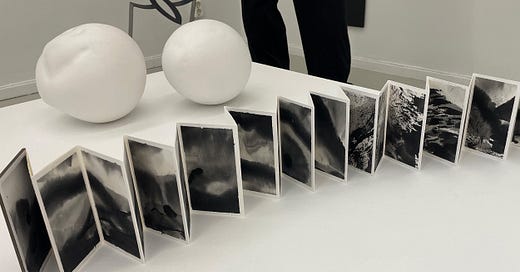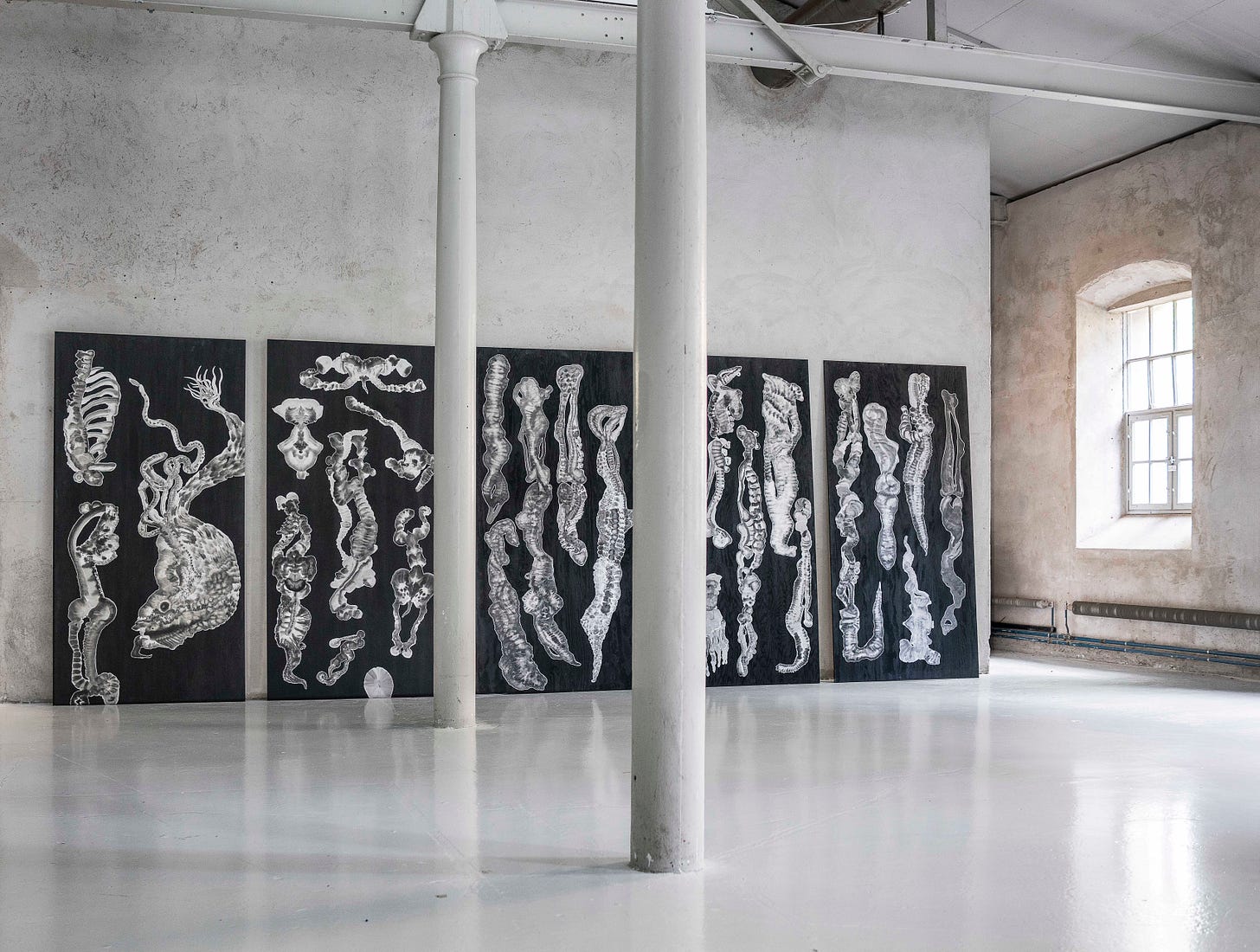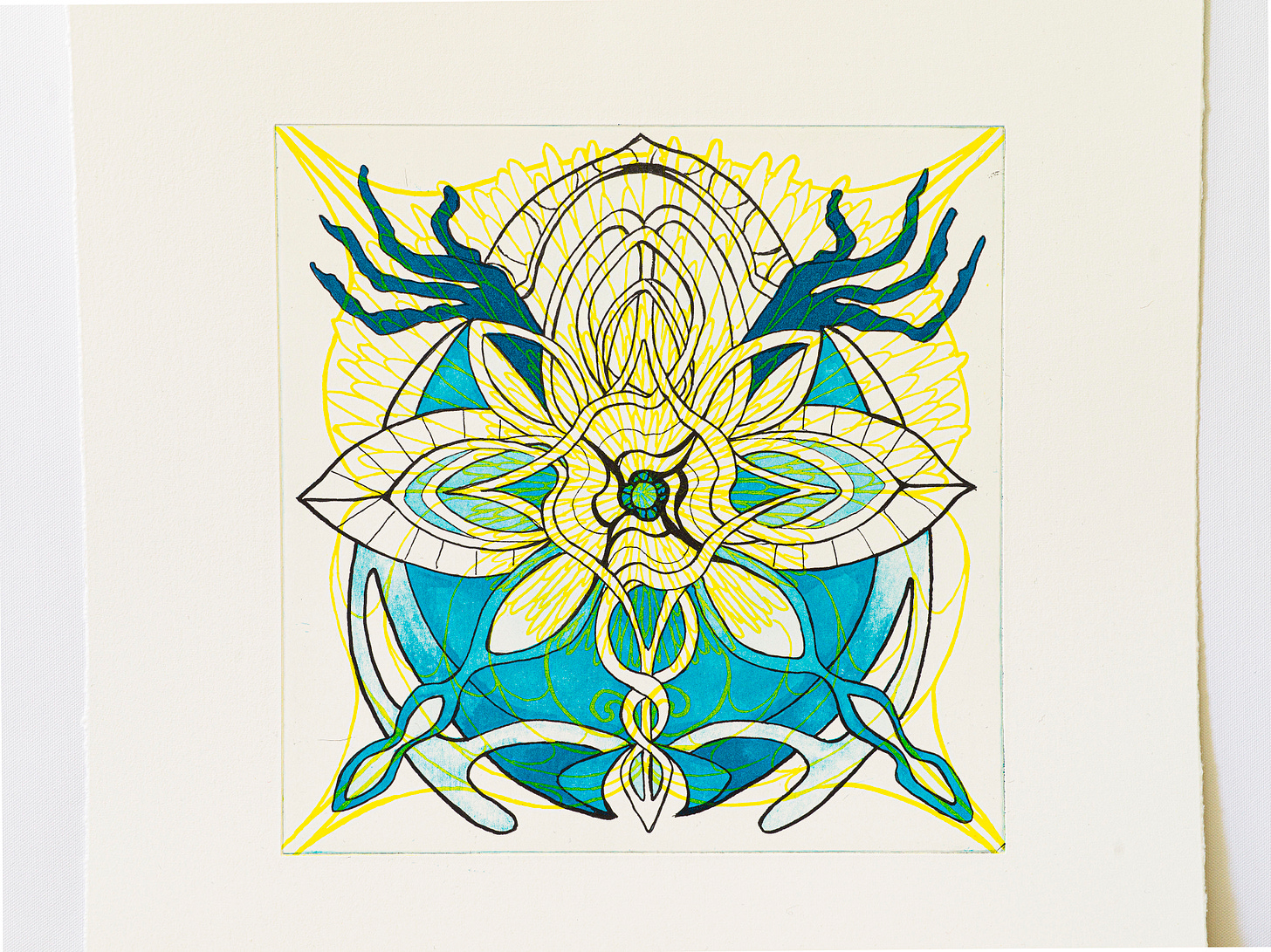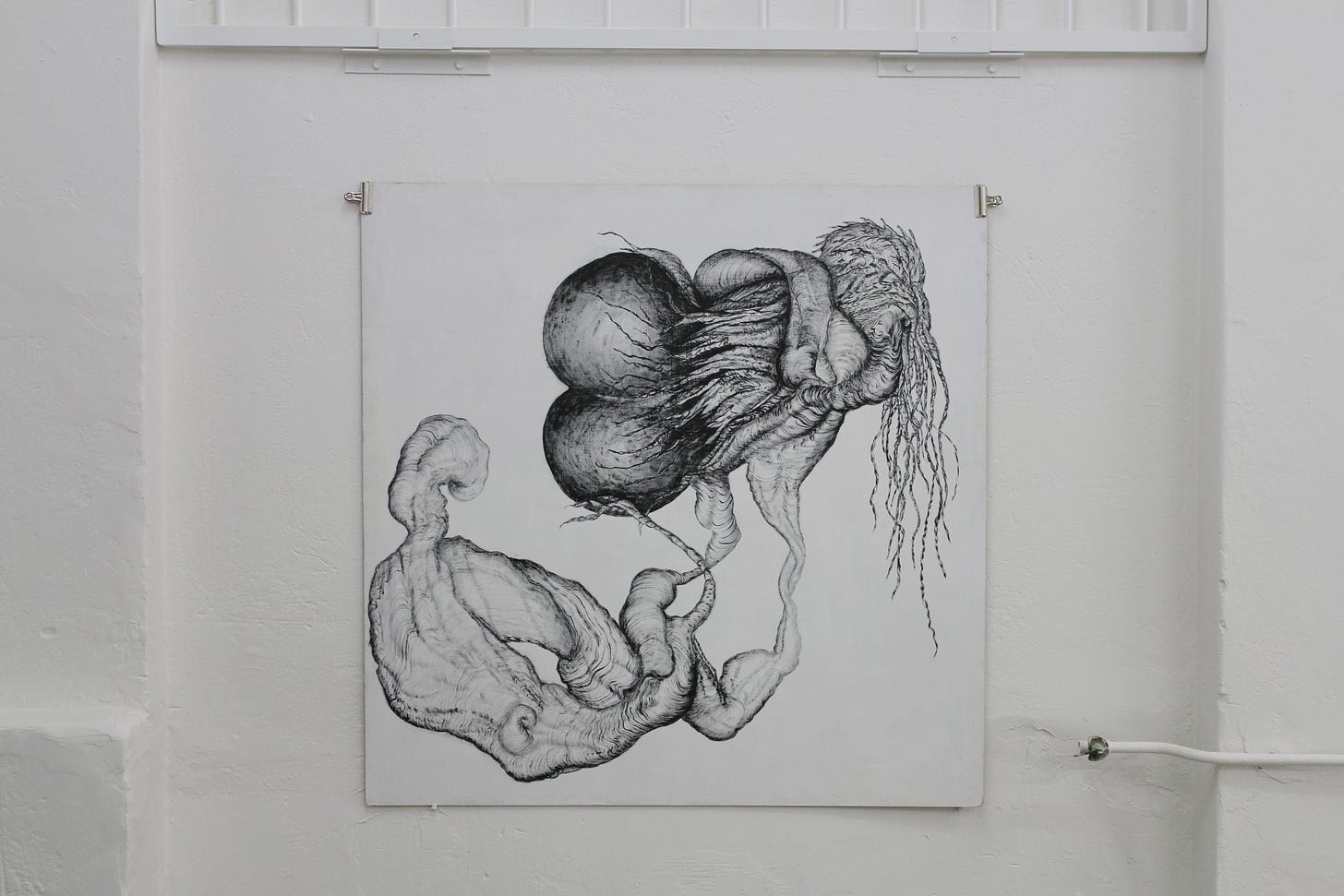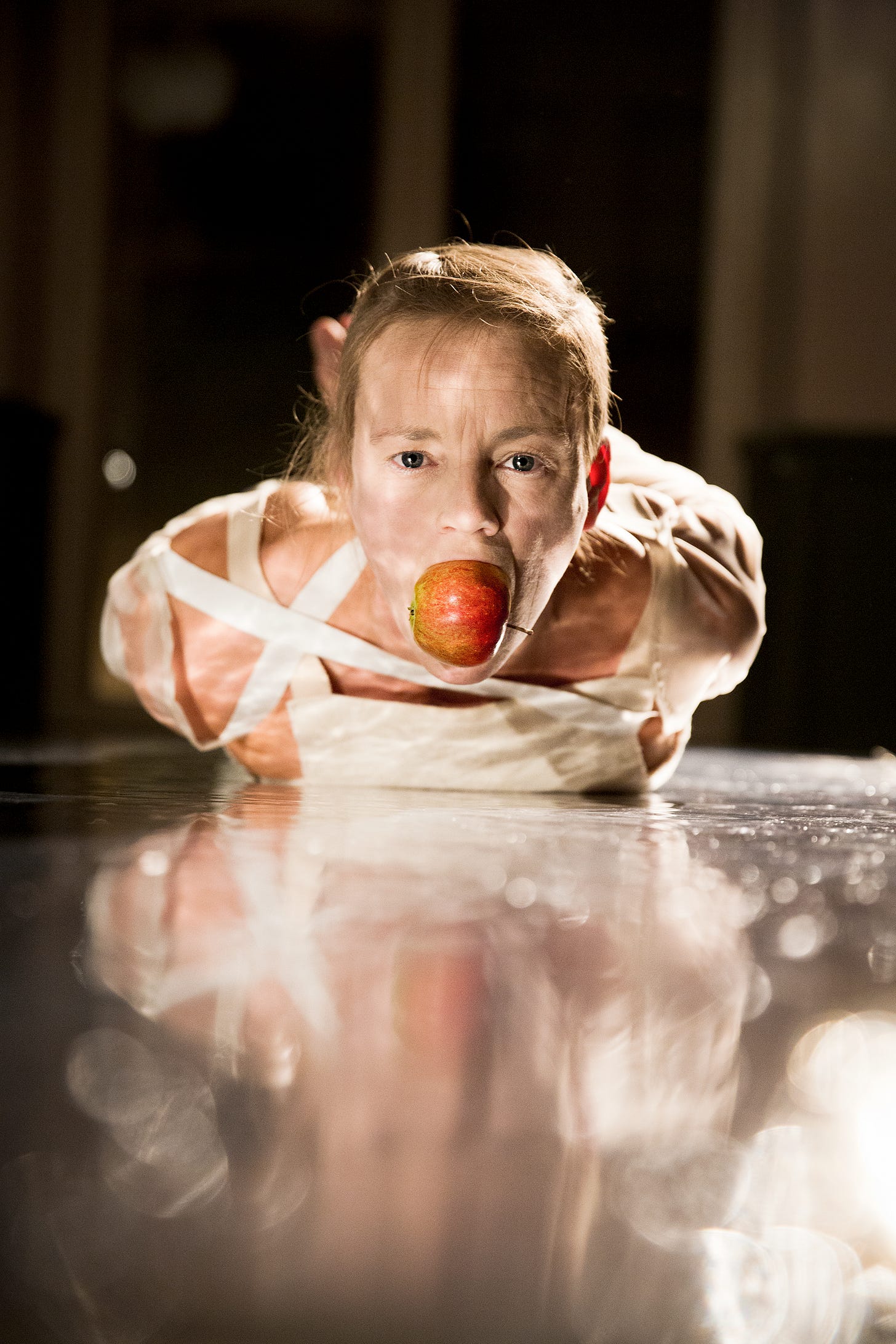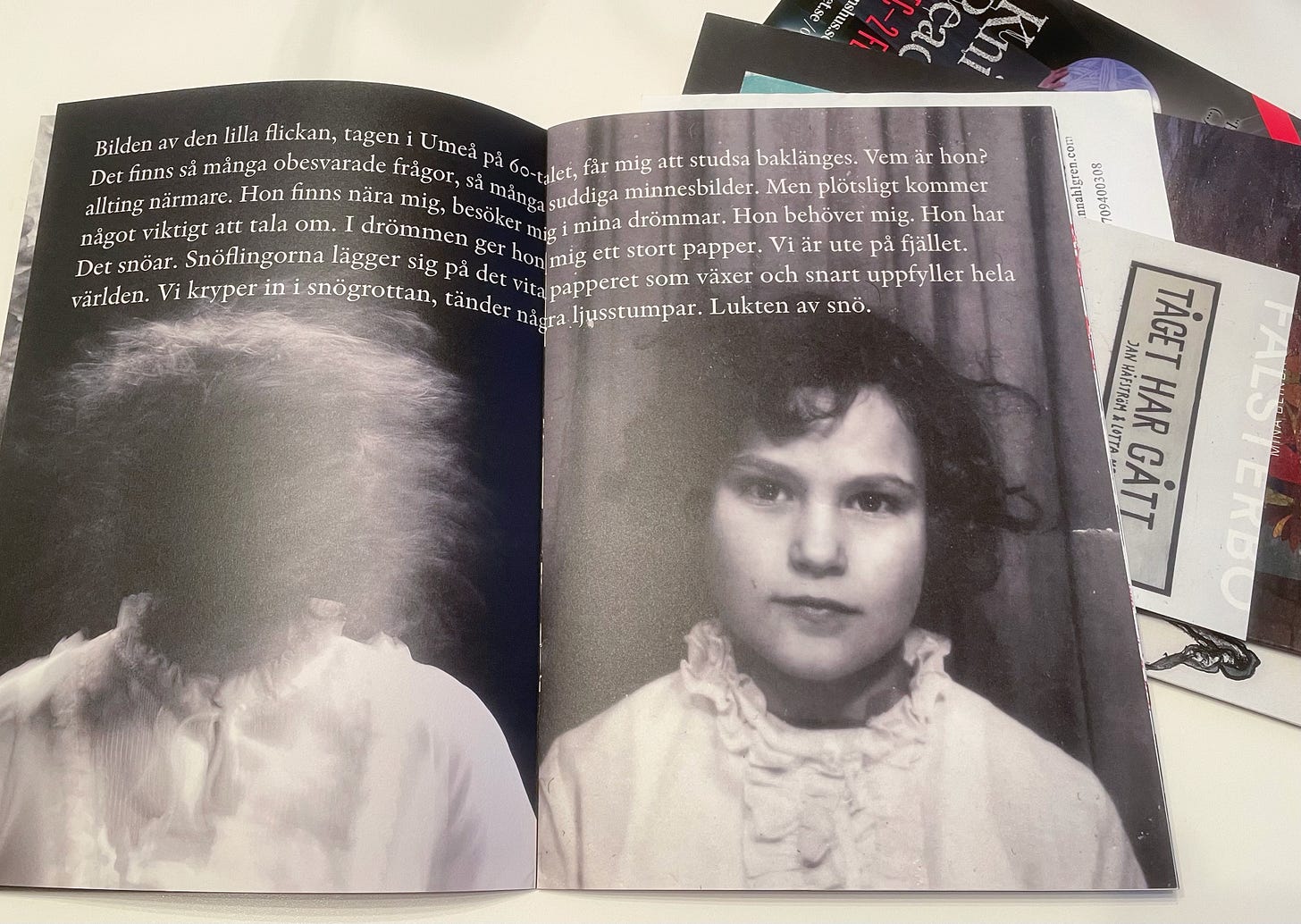I've always been fascinated by how artists express their inner world in different ways. Each of them tells their own story in a variety of creative forms: painting, dancing, making music, taking photographs. This month's featured Swedish artist Lotta Melin, mainly known as a choreographer, chooses to experiment with many of these forms.
Lotta Melin was born in Gällivare, north of the polar circle, in 1961 and started dancing from the very early days. When she was 17, she moved to Stockholm to further her education in dance. For many years, she was a well known choreographer and worked with different artists; Christina Kubisch, Leif Elgren, Sonic Youth, Benoit Maubrey, Maja Ratkje, Hild-Sofie Tafjord, experimenting with sound, video and scenography.
However, to be a cultural worker whose financial wellbeing depended on state support and donors was challenging. Searching for money, hiring people, selling performances put huge pressure on Lotta, so she decided to quit her job as a choreographer. In 2013, she performed an official farewell dance “Gare du Nord” at the Academy of Fine Arts …
… and that was the beginning of something new. Although she felt exhausted, a dream about painting came to her and started a healing process that materialized into a huge range of art forms like paintings, installations and sculptures.
One of her exhibitions was the beginning of my new acquaintanceship. Last year, Lotta’s works were exhibited at “Andys Gallery” in Stockholm. My photographer’s eye was caught by a beautiful book she made, painted with Chinese ink, which further led me to meet her in her studio near ‘Färgfabriken’ in Stockholm for a chat.
Lotta guides me into her place through other artist spaces. I met Finn Ahlgren, a creator of incredible, designed objects from recycled materials. We passed the studio of Lotta’s husband, painter Jan Håfström. And we settled in a cozy small room, filled with her art works.
You can’t miss the biggest one. A huge black installation, called “Souls communicate”, filled with rice paper cuttings, painted with Chinese ink.
We start discussing how different people experience art. I could see three skeletons, fibers, muscles, tissues. She says maybe it came from her childhood. As her father was a doctor, an orthopedist, she saw the x-rays of skeletons hanging in his treatment room.
Lotta Melin: That’s how I interpret what happened in my childhood. It is a conversation with my father, whom I barely saw after he divorced my mother. It can be human or pieces of animals. At an exhibition I had recently at Dalslands Art museum, kids stood in front of the paintings and said it looked like an aquarium with a lot of fishes. You can see so many different things in it. Some people think it is scary.
To me it doesn’t seem scary at all. I think it is fascinating how art touches us differently.
Yes, exactly. I like when people experience art in their own way. And if it causes curiosity or fear, you start asking yourself questions.
What does this process of digging deeper look like? Do you do it consciously knowing what the end result will look like, or does this process comes naturally to you?
I think artists are like archeologists. They go deeper into something they want to examine. It can be a movement, a sound, a painting, a memory….It is a process that starts from an idea, a dream or a feeling.
So it is a lot about dreams, intuition and letting some unknown field come to you.
Dreaming is a big help for me sometimes. Even when I was choreographing, I could get answers in my dreams.
I have made projects where all instructions came from a dream. For example - my daughter's best friend, she's like an extra daughter for me, got a kid and I was unsure of what I should give her? A little painting or a drawing, maybe!
So I took a piece of paper. I put a pencil in the middle of the 16x16 cm paper and started to paint. So I had a gift for her.
Next night, I dreamt that I had to do these kinds of paintings for every child that is born on this Earth. I realized I can't do that. That's too much for me. So I made 52, one for each week during the year.
I made up some rules for myself - I was not allowed to change or throw any of the paintings away despite any mistake I made - it was a big challenge.
We go around Lotta's studio and she shows me different artworks. She cuts the plastic protection of one painting, standing on the floor.
I think it is very important to have old paintings around me. So I can sit down in front of them and look at them for hours. This is one of my oldest paintings. When I look at it today, it arouses a desire to continue where I left off.
I can see different kinds of art forms here in your studio. For example this sculpture.
Well that's the only sculpture I made, so far. It's called “Elephantine”. I made it when I was in China. I was living in a studio with Bård Brejvik, a Norwegian artist. It was December and very cold in the studio despite wearing wool from head to toe. Bård, who had been a sculpture professor in Stockholm, gave me a large lump of clay. “Make a sculpture, and you’ll stay warm”. This is how this creature came to life. My dream is to make “Elephantine” on a much much bigger scale, as a tribute to all large animals that we have exterminated.
Do you think you will make more sculptures?
Yes. I am eager to make more sculptures, but then I need a commissioner who can pay.
Have you ever thought, why does your art come in such a variety of forms, like painting, sculpture, sounds, dance or mixture of it? Even then we are talking and you show your works, I see you are dancing by moving your hands and your body, it looks like you're still dancing through your life. So the dance performance is still there?
Well, the painter Jackson Pollack was also a dancer. He wanted to be “in” the painting. He threw the paint on the canvas to see what happened… At the same time he controlled the process. But “action” was essential, a way to meet the “unexpected”. The hidden memories. The pain. And the passion of being alive.
I jump from one ice float to another. I have to put myself into dangerous places. Darkness stimulates me to take risks. Without risks there is no art!
In your artistic statement you mention that everything that has happened to us is preserved deep inside the darkness of the body. And by dancing, making a sound, creating paintings or other forms of art, you heal yourself. Does that mean that you can heal others also?
Yes, I believe that ”healing” - in a wider understanding – is the meaning of art. Not only for the maker of course. The maker transforms his private pain to something universal that concerns everybody, every beholder.
Could you tell us about some of the collaborations you did with other artists that made a big impact on you.
When Jan Håfström had his big painting show “Heart of Darkness” at Liljevalchs Art Museum in Stockholm 2009, we decided that I should make a performance in the exhibition. Together with three dancers, one circus performer, one musician and one guide – Jan Håfström – we made the performance “Concerning the disappearance of Diana Palmer.”
I read Joseph Conrad’s novel “Heart of Darkness” and saw similarities between Jan and the book’s main character, Marlow, who narrates to his listeners the story of his assignment as a steamer captain for a Belgian company in the African interior. I asked Jan if he could portray Marlow: be a kind of guide throughout my performance. A parallel to Marlow’s steamboat journey on the Congo river. In my mind this journey also represents the struggle of an artist.
I believe my own journey started when I was 21 years old. I suddenly understood that dance was going to be a fight for my life, not a dance on roses.
We also made a performance together at the Venice Biennale 2009.
25 years later, when I worked with two Italian artists Goldschmied & Chiari outside Rome, I got a fantastic flashback of that moment when I understood the path I had chosen. Dressed like Carmen Miranda, I danced on a mountain of dump. So bizarre. So beautiful. So crazy. So true. A moment when I also understood that art and politics need each other.
Tell us more about your new graphic works.
I work with a fantastic graphic designer, Ole Larsen in Helsingborg. We started our collaboration in the spring of 2020. The plan was to print a series of etchings based on 12 of my paintings. At my disposal I had: 4 printers, 48 plates and 4 colors. After a while, I felt limited by the traditional printing procedure. How would I now face this problem? I suddenly thought of John Cage’s so-called chance theory. I gathered my workforce and laid out my plan. I gave the printers four plates each, then they were given the freedom to mix the plates, the colors and the order the way they wanted. It fell into good soil. They had never worked this way before. We were laughing a lot and the result exceeded all our expectations.
You are constantly coming back to your childhood. In one of your exhibitions, called “From the Darkroom”, you presented three paintings of you as a little girl. Tell me more about that.
More and more I see my studio as a kind of darkroom where I develop pictures from the past. From my childhood, for example.
I happened to find a photo of myself, at five years old, taken in a photo booth. I immediately understood that this photo from 1966 was a treasure. It was a path directly to the spot where my pain started. Where darkness took over. It was a very heavy moment in my life. But it was at the same time “the truth”.
I had received an important mission: To find the light in the darkness.
To learn more about Lotta Melin’s work, you can follow her on her Facebook.

